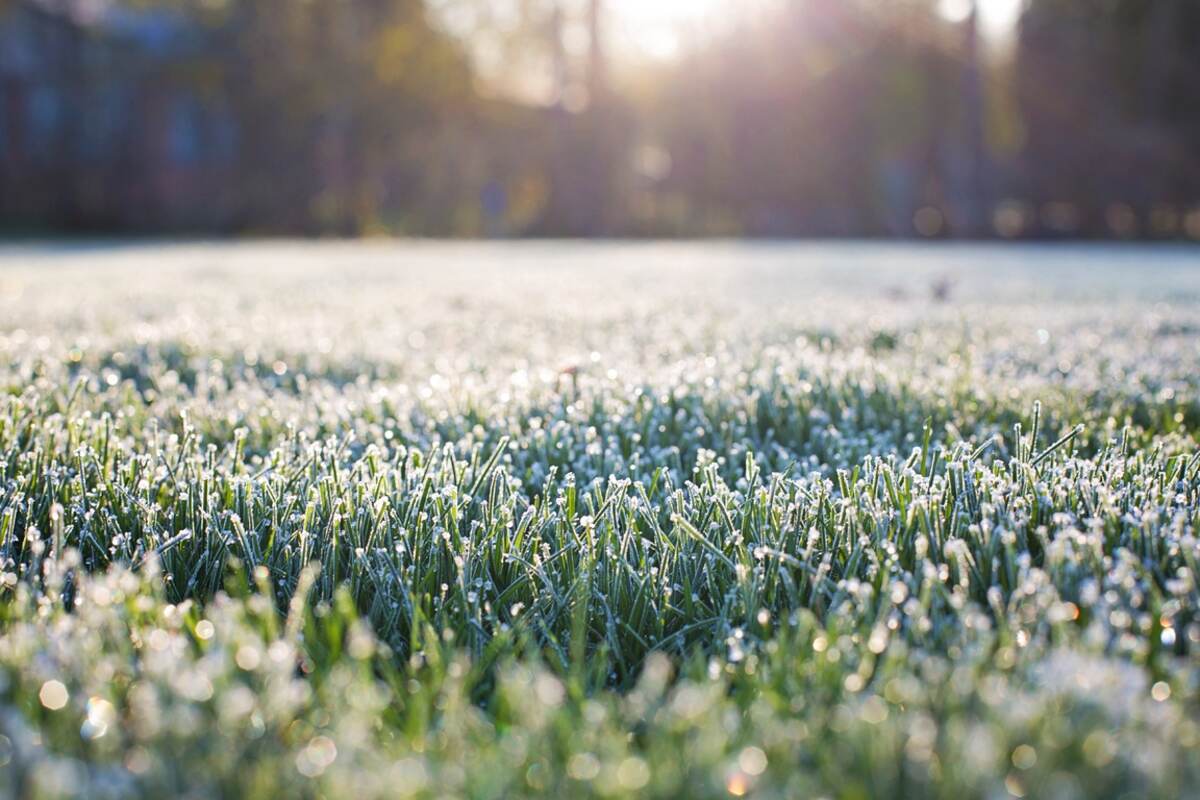
When chilly days make you wrap tighter in your coat and get you thinking of Christmas presents, don’t forget about your beautiful lawn. It’s sleeping now and is not so charming, but it needs your care more than ever. Keep it clean, water it a bit, and don’t ignore mold signs. In the spring, you’ll have amazing, healthy, thick grass covering your yard. Are you still trying to figure out what you should do during the cold season? Follow our winter lawn care tips for the Atlanta climate.
- 1. Winterize Your Atlanta Lawn
- 2. Protect Dormant Warm-Season Grasses
- 3. Don’t Overwater Your Atlanta Lawn
- 4. Keep the Lawn Free of Dead Leaves and Debris
- 5. Let the Tall Fescue Grow Taller
- 6. Avoid Using Rock Salt
- 7. Take Out Atlanta’s Winter Weeds
- 8. Prevent Lawn Fungus
- 9. Keep an Eye on Winter Lawn Pests
- 10. Winterize the Lawn Mower
- 11. Winterize the Sprinkler System
1. Winterize Your Atlanta Lawn
When you’re hanging up your Halloween costume, that’s an excellent time to start preparing the lawn for winter. It’s a simple routine that keeps the grass strong and safe until spring. All you have to do is:
- Trim the trees – to prevent fallen branches and limit dead leaves.
- Rake fallen leaves.
- Remove debris and outdoor furniture from the lawn.
- Give it a last mow, about 0.5 inches taller than the regular fall cutting height.
- Aerate and dethatch the lawn if necessary.
- Overseed to cover bare patches.
- Fertilize with a phosphorus and potassium fertilizer, low in nitrogen.
- Apply herbicides and hand-pull weeds.
- Use a fungicide to prevent winter turf diseases.
Proper winterizing makes the lawn a breeze to care for during the cold season. Let’s see what’s left to do from December to chilly February.
2. Protect Dormant Warm-Season Grasses
In wintertime, Atlanta’s warm-season grasses go dormant, turning brownish. They don’t die but sleep through the cold, conserving nutrients and energy.
During dormancy, grasses like Bermuda and Zoysia cannot heal and regenerate. They are vulnerable and fragile, especially when it’s freezing outside or after an ice storm.
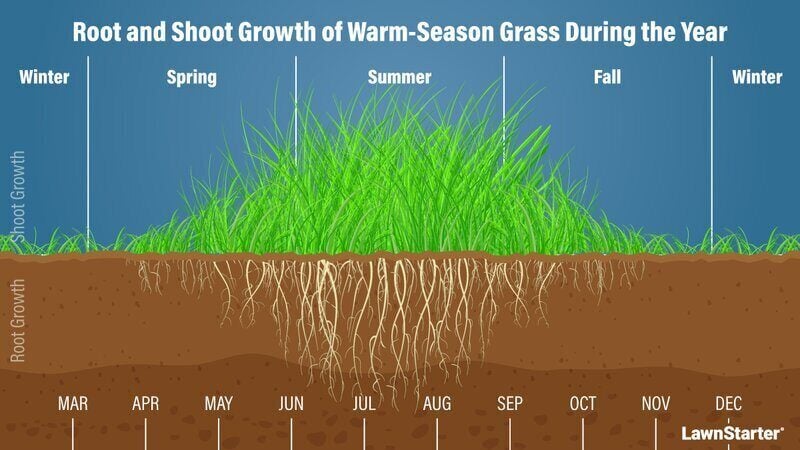
To protect your beautiful lawn in the winter months and ensure a healthy comeback in the spring:
- Avoid foot traffic on the grass unless it’s absolutely necessary. Never walk on the grass when it’s frozen.
- Keep the kids and pets away from the lawn as much as possible.
- Don’t use any heavy equipment on the grass.
- Avoid placing holiday decorations on a Bermuda or Zoysiagrass lawn.
- Pile the snow collected from pathways away from the turfgrass.
3. Don’t Overwater Your Atlanta Lawn
Dormant warm-season grasses use less water but still need some irrigation during winter. Ensure about 0.5 inches weekly, but stop watering when it’s freezing outside.
The lawn absorbs and evaporates less water during winter, so avoid overwatering. Too much moisture can lead to mold and support unwanted winter weeds.
4. Keep the Lawn Free of Dead Leaves and Debris
Dead leaves and organic debris can build up in a thick thatch layer that:
- Blocks the sunlight and oxygen necessary for grass roots.
- Captures moisture, exposing the plants to fungal diseases.
To protect the grass during winter, check the lawn monthly and clean it up if necessary. Start by removing tree branches, pet waste, and garbage. Continue by collecting leaves, twigs, and dead grass with a rake. On a large lawn, you’ll work faster with a good leaf blower.
Pro tip: Don’t store piles of leaves or other organic waste on the lawn. You’ll make it a top attraction for termites. Shred the waste and use it as mulch or add it to the compost bin.
5. Let the Tall Fescue Grow Taller
By December, Atlanta’s warm-season grasses are dormant, and you no longer need to mow. On the other hand, tall fescue (a cool-season grass) stays green but grows a lot slower during winter months, as you can see in the illustration below.
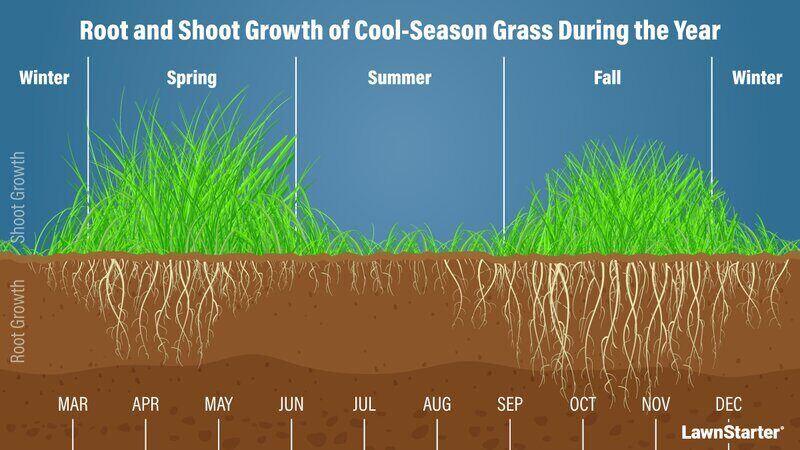
You’ll typically need to mow tall fescue about once a month during winter and set the mower blades about 0.5 inches taller. This allows the plant to store more nutrients and efficiently complete photosynthesis during winter.
6. Avoid Using Rock Salt
In 2011, a snowstorm buried the yards and streets of the Metro Atlanta area in a thick white blanket. In Alpharetta and Milton, it shut everything down for days. But local weather rarely has such tantrums, and it’s usually mild, with an average of 1.2 inches of snowfall in January.
On the other hand, the typical Atlanta winter often brings a thin layer of glassy ice on walkways. Many homeowners use rock salt to melt it. You shouldn’t.
Salt rock or sodium chloride is toxic for plant roots and removes moisture from the soil. It can damage the turfgrass if it gets on your lawn from melted snow and ice. To protect your lawn from its effects:
- Shovel the snow instead of using rock salt to melt it (don’t pile the snow on the lawn).
- Use a salt rock replacement such as calcium chloride or magnesium chloride. They are effective enough to get the car safely out of the driveway during the next Snowmageddon.
- Create a barrier around your lawn to prevent salty water from draining into the ground.
Pro tip: If you contaminate the lawn by accident, apply gypsum. It moves salt away from the grassroots.
7. Take Out Atlanta’s Winter Weeds
When the weather gets cold in Dogwood City, warm-season grasses go dormant, and tall fescue slows growth. But annual winter weeds thrive. The most common Atlanta weeds to enjoy the cold weather are:
- Annual bluegrass (Poa annua)
- Henbit (Lamium amplexicaule)
- Chickweed (Stellaria media)
- Swinecress (Lepidium didymum)
With such low competition for nutrients, sun, and water, winter weeds grow at length. The good news is they are easy to spot, especially on a straw-colored Bermudagrass or Zoysia lawn.
The bad news is most herbicides are less effective in low temperatures. So, you’ll need to plan weed control intervention at this time of year carefully.
Apply Weed Killer on Warm Days
The best approach is to apply herbicide in early December or late February when it’s warmer. If you need to spread a weed killer mid-winter, avoid days under 40°F. Below 40°F, weeds also hibernate. Since they stop photosynthesis and respiration, the weed killer cannot enter their systems.
Wait for a window of warm weather when the temperature reaches 50°F to 60°F. This allows the weeds to return to active growth and become vulnerable to herbicides.
Choose the Right Herbicide
Common weed killers don’t harm dormant grass. You can apply a general formula on a warm-season lawn that has entered dormancy. If you have a tall fescue lawn, use a selective weed killer to avoid damaging the turfgrass.
Always read the instructions carefully. Ensure you use the proper herbicide for your type of grass and weeds before applying.
Still trying to decide what product to use? Call the Fulton County Extension Office or find a landscaping company in the Metro Atlanta area to remove the weeds from your lawn.
8. Prevent Lawn Fungus
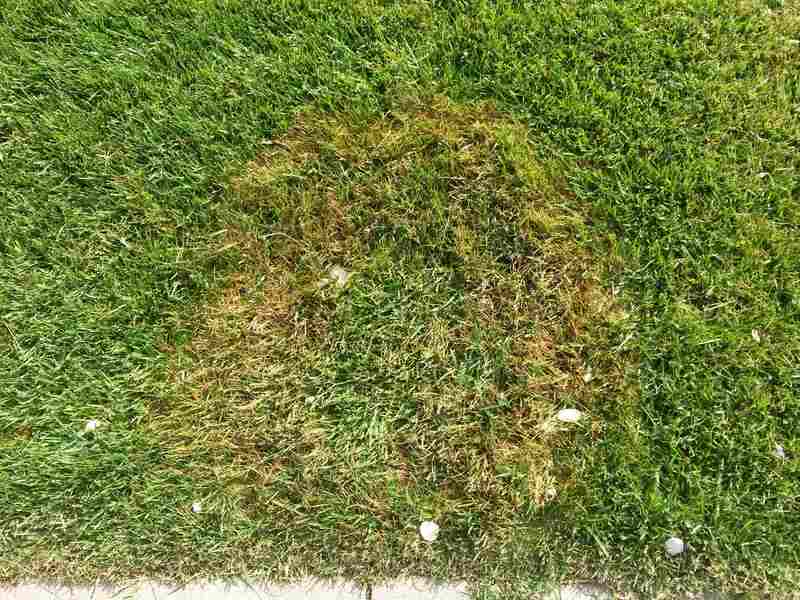
Even with fall aeration, proper mowing, and watering, the cold and moist winter weather exposes your turfgrass to the risk of fungal diseases.
Dollar spot, brown patch, and pythium root rot are the most common to look for on the Big Peach’s lawns. Left unchecked, they will bloom in early spring and damage the grass at its most vulnerable stage.
Pythium root rot is active all year round, while brown patch and dollar spot are more sensitive to the cold weather and are only active in December. Here’s how to recognize them.
| Winter Lawn Disease (Active Months) | What to look for |
| Brown patch (February to June, November to December) | Rings or circular patches of blighted turfgrass.Reddish-brown or black leaf spots.“Smoke-rings” – thin, brown borders around the diseased patches.Leaves pull out easily. Roots are not affected. |
| Dollar spot (February to December) | Sunken, circular patches of grass, brown to straw color, measuring up to several inchesSmall lesions on the leaves, yellow-green to straw color, with a reddish-brown border. |
| Pythium root rot (all year round) | Yellow, irregularly shaped patches. Turfgrass is thin, off-color, and slow growing. |
The symptoms are easy to spot in still-green tall fescue lawns. In warm-season grasses entering dormancy, you’ll need to use the tug test to separate dormant from dead grass.
The test is simple: grab the straw-colored grass and tug it firmly. If it’s hard to pull out, it’s dormant. If it pulls out quickly, the grass is dead, and you might have a fungi infestation.
To prevent more extensive fungus infections in the spring, apply a systemic liquid fungicide in the winter before the first snow (never apply over the snow layer).
9. Keep an Eye on Winter Lawn Pests
With Atlanta’s mild winter weather, most lawn pests don’t disappear but find warm, cozy spots to hide.
Grubs are the most active and feed on grass roots until springtime if left alone. Keep an eye on brown patches in a tall fescue lawn and look for bare areas in warm-season lawns.
If you see signs of infestation, hire a professional lawn care service to apply a suitable pesticide. Your lawn will be healthier and safer when the growing season starts!
10. Winterize the Lawn Mower
Even with a tall fescue lawn in the mild Atlanta area climate, you can take a weekend day and winterize your lawn mower in mid- to late December. Good quality, well-maintained tools are essential for keeping a healthy lawn, and the first spring lawn care tasks are closer than you think.
To prepare your gas lawn mower for a few weeks of well-deserved break:
- Empty the gas tank
- Disconnect the spark plug
- Remove, clean, and sharpen mower blades
- Drain the oil
- Clean the mower undercarriage
- Change the air filter
- Replace the spark plug
- Store the combustibles safely
- Store the lawn mower in the garage, safe from moisture and direct heat.
Winterizing your mower keeps this essential tool in good condition and helps start spring lawn care without problems.
11. Winterize the Sprinkler System
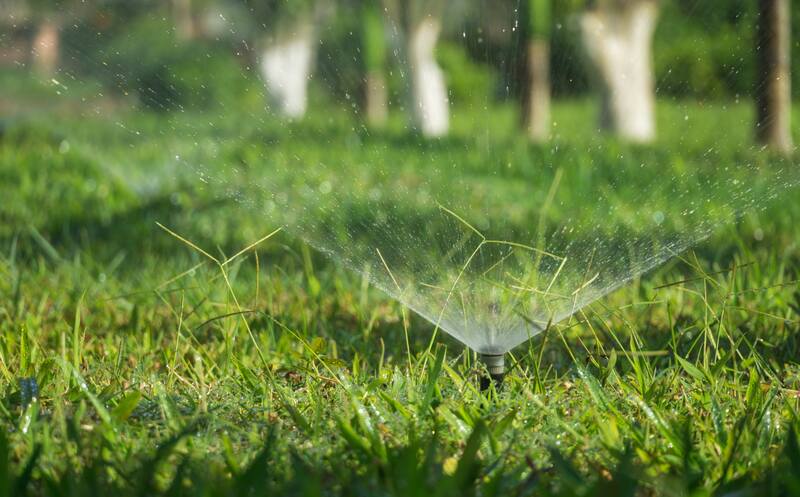
With a mild winter and temperatures typically holding above 35°F, sprinkler systems are safe for most of the cold season in Peach State lawns. But even so, consider winterizing your sprinkler system from mid-January to mid-February. This is when temperatures often drop to freezing during the night.
Here’s what you need to do to winterize your sprinklers:
- Check pipes and sprinkler heads for damage. Turn the system on to see if there are any leaks. Repair the damage or replace components if necessary.
- Shut off the water to the sprinkler system.
- Turn off the scheduled times if it’s automated.
- Drain the water from the entire system.
- Insulate above-ground pipes.
FAQ
No, winter is not a good season to aerate the lawn, no matter the type of grass, even in the mild Atlanta climate. Aeration puts equipment and a person’s weight on dormant or semi-dormant, vulnerable grass.
Poking holes in the ground can also affect the roots, and the plants recover with difficulty during this season. If you’re dealing with high soil compaction, postpone aeration until the grass’s growing season begins.
To keep your lawn looking good during the winter, take care of the basics:
● Remove branches, pet waste, and garbage.
● Clean up dead leaves and other organic debris.
● Keep off the lawn. Foot traffic can ruin fragile dormant grass.
● Keep watering.
The grass needs 1 inch of water weekly to keep it healthy and robust. You stop watering when the soil gets 1 inch or more through rainfall or snow. In this case, irrigation leads to overwatering.
Metro Atlanta mainly falls in USDA hardiness zone 8a, with annual minimum winter temperatures of 10 to 15°F. It also includes areas in zone 7b, mostly northern cities like Cumming, with an annual minimum winter temperature of 5 to 10°F.
Start Preparing Your Green, Lush Spring Lawn Today!
Winter lawn maintenance prepares and protects the lawn until the first warm spring days. You still need to water, but not as much, and mowing is barely necessary. But pests, diseases, and weeds are still a problem. It might be the perfect time to call a professional to evaluate and treat your lawn for the new season. Contact an Atlanta lawn maintenance company and start preparing today for a green, lush grass cover in the spring!
Main Image Credit: Pxhere